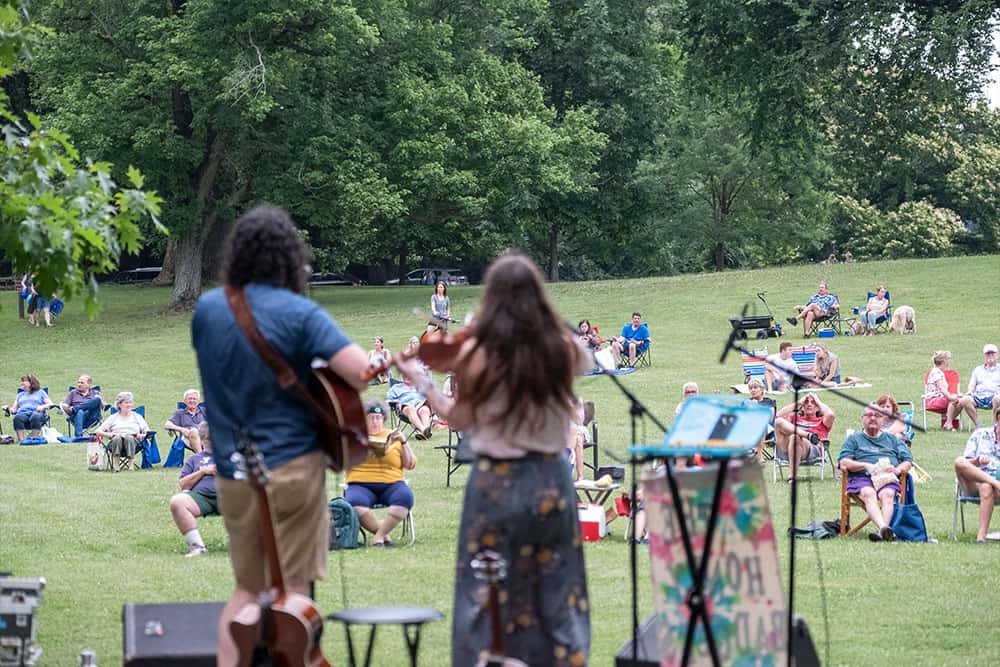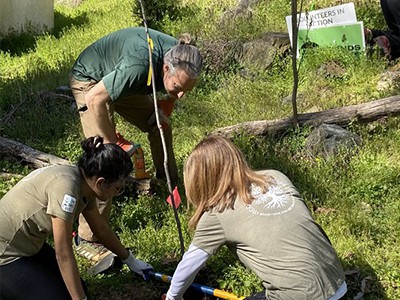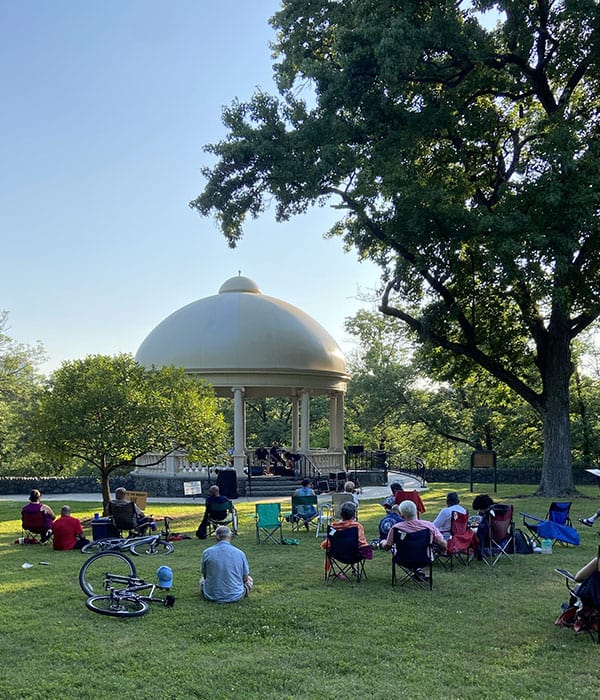


HISTORY OF THE SUGAR BOWL
In 1895, Theodore Leisen, the Board of Park Commissioners chief engineer, proposed the construction of the Sugar Bowl Observatory
Selecting its location on the cliff for its “picturesque outlook up the Brandywine.” He imagined it above the river, near the northern end of the recently completed Washington Street Bridge.
After its completion in 1902, the Sugar Bowl, with its domed pavilion, served for several decades as a meeting place, site for concerts and church services and venue for community and patriotic programs (from Susan Mulchahey Chase, Within the Reach of All: An Illustrated History of Brandywine Park). Sadly, the structure fell into disrepair. In 1949, the roof had to be removed and by the late 1950s, the crumbling concrete railing was dismantled. What remained was only its concrete circular base.

